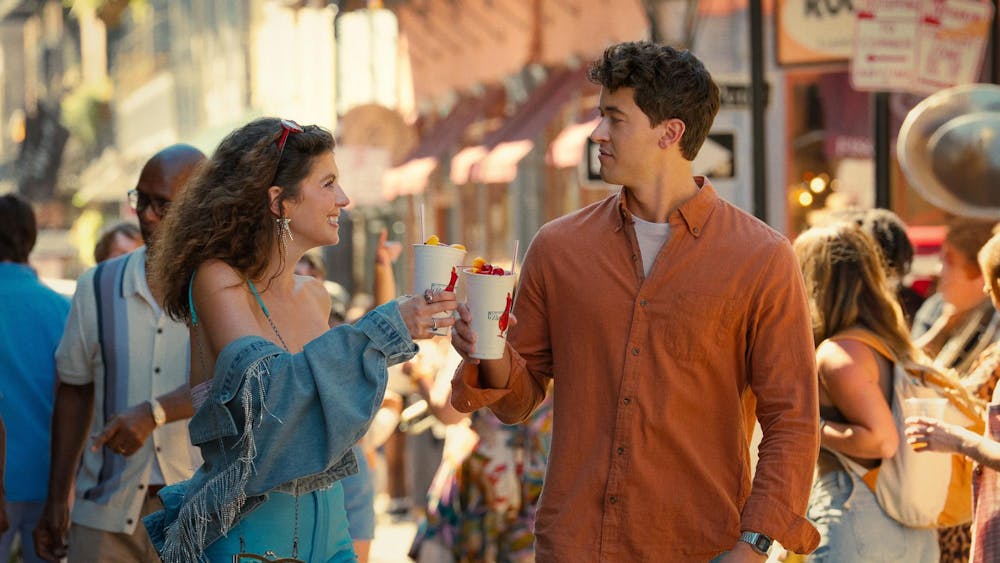Mardi Gras is known in college circles as an excuse for drinking and a chance to bare breasts for beads (or take pictures of someone else doing so), risking it all for 10-cent trinkets. But behind the madness that is sensationalized by the media, there is more than two centuries of history and tradition that is often ignored. \nOriginally brought to this continent by the French and Spaniards, Mardi Gras is a time for revelry and excess before Lent, a period of 40 days of atonement and reflection when Christians give up a vice or luxury to consider the important things in life. The phrase "Mardi Gras" is French for "Fat Tuesday," indicating the large amounts of food people eat that day to make up for what they won't eat during Lent, which begins today.\nMardi Gras in New Orleans began to resemble the Mardi Gras we know today in the early 1800s. In 1806, Mardi Gras celebrations were banned for being too rowdy, but no one really observed the ban, and festivities were made legal again in 1823, according to the official Web site, www.mardigras.com.\nThe New Orleans celebration is mostly sponsored by Krewes, organizations that finance the parades and play host to much of the social activity of the celebration, a local shopowner said. They also contribute to philanthropic events throughout the year. The first Krewe, the Mystick Krewe of Comus, was formed in 1857 and still exists today. Two of the most famous traditions of Mardi Gras were established during the late 19th century. The tradition of throwing trinkets to crowds during parades began with the Twelfth Night Revelers, a Krewe in the early 1870s. The official colors of Mardi Gras were chosen by the king of Mardi Gras in 1872. Purple is said to represent justice; green, faith; and gold, power.\nAbout 60 Carnival parades decorate the streets between Jan. 6, also known as the Epiphany, and Ash Wednesday, the first day of Lent, with most occurring during the two and a half weeks before Mardi Gras. These parades are sponsored by the Krewes, which are responsible for making the New Orleans celebration the international phenomenon it is.\nThere is a Krewe for just about everyone. There are Krewes that represent minorities, those that represent the old establishment -- even one for dogs. Two of the most famous big parades are those of the Rex and Bacchus Krewes. Rex's parade is the main parade of Mardi Gras Day. Whoever is crowned King of Rex is also the King of Carnival. Bacchus holds its parade on the Sunday before Mardi Gras and is famous for its large, decorative floats and national celebrity monarchs. Some celebrities who have been given the honor of being crowned Bacchus, the Greek god of wine, include Charlton Heston, Kirk Douglas and more recently, Luke Perry.\nThe Zulu Social Aid and Pleasure Club has a different vision of Mardi Gras. Zulu is known for poking fun at the Mardi Gras celebrations by donning black face and parading from bar to bar in old, beat-up cars rather than floats. The Krewe never bothered to establish a parade route until recently. While its ways are different than those of the larger Krewes, Zulu hasn't shied away from selecting celebrity monarchs -- Louis Armstrong was King Zulu in 1949. Zulu also has the most unique and coveted throws -- the items each Krewe tosses from its float -- of Mardi Gras: hand-decorated coconuts.\nBeyond the tradition, though, there lies the cold, hard fact that most people travel to New Orleans during Mardi Gras, not for the tradition, but for the mayhem. Many might wonder if locals ever tire of the Mardi Gras excitement. For sure there are those who dread the coming of the crowds and the festivities that draw them, but many look forward to Mardi Gras year after year. Jerome Deal, a 21-year-old native, is one such person.\n"Mardi Gras is an excuse for a whole lot of people to just troll the streets," Deal said. "There's the thrill of catching beads, spending time with the whole family, listening to music and not having anyone tell you to turn it down. It's a time to get your laugh on, wear costumes and not look like yourself at all. You never get tired of Mardi Gras because you always see something new."\nAntonio Whitfield, a student at the University of Arkansas at Monticello, visited New Orleans in the weeks prior to Mardi Gras for the first time this year.\n"This is my first time down here. It's crazy compared to home!" he said. "I ain't had a chance to get into any trouble yet, but…"\nBourbon Street is the center of Mardi Gras madness, but not the history. While most of the breast-baring and hard drinking does occur on this street, not much else connected to Mardi Gras does. Not one parade passes down Bourbon Street.\nJunior Elizabeth Ross went to Mardi Gras for the first time this year, and some of her biggest impressions were of Bourbon Street.\n"There aren't many other places where you can see a five-star hotel next to a voodoo shop, or the see a show put on by the Preservation Jazz Society on a street lined with strip joints," Ross said. "It was a very interesting dichotomy of the ritzy and the sleazy all on one street."\nThere is much more to Mardi Gras than "Girls Gone Wild," even if many never get beyond that stereotype. No matter what the draw of Mardi Gras, though, this is one celebration that everyone should experience once in their life if only to tell their children "Been there, done that"
Mardi Gras jubilee ignores 2 centuries of history, tradition
Get stories like this in your inbox
Subscribe





